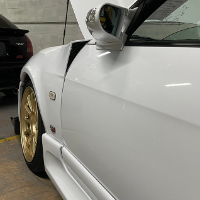Leakdown Test With Motor Out.
Announcements
-
Similar Content
-
Latest Posts
-
By TurboTapin · Posted
You just need to remove the compressor housing, not the entire turbo. I would not be drilling and tapping anything with the housing still on anyways. -
So, I put my boat on a boat. First of all, I'm going to come out and say it. Why is Tasmania not considered a holy goal, an apex that all road-legal modified cars go to, to experience? This place is an absolute wonderland of titanic proportions. If people are already getting club runs for once in a lifetime 30 person cruises to Tassy then I've never seemed to see it. It is like someone replaced the entire place with an idyllic wonderland for cars, and all of the people living there with paid actors who are kind, humble, and friendly. Dear god. After doing a lap of almost all of the place I've found that it's a great way to find out all of the little things that the car isn't doing quite right and a great way to figure it all out. All in all, I drove for 4 hours a day for a week and nothing broke. I didn't even need to open the engine bay. This is by all means a great success, but it has left me with a list of things to potentially address. I also now have a 3D printed wheel fitment tool which annoyingly hasn't got any threads in it to actually assemble it. I might be able to tape it together to check the sizing I actually want to use, but it'll likely involving pulling the shocks out to properly measure travel at least at the front, and probably raise the car while I'm at it, at least in the rear. I scraped on quite a few things and I'm not sure how else to go about it. I was taking anything with a bump at what felt like 89 degree angles. And address those 10 other tasks. And wash the car. God damn it is dirty. And somehow, the weather was perfect the entire time - And because I was on the top of Mt Wellington it turns out it was very much about to freeze up there. I did something I typically never do and took some photos up there in what must have been -10 and the foggy felt like suspended ice, rather than mere fog. If you own a car in Australia, you owe it to yourself to do it.
-
Damn that was hilarious, and a bit embarrassing for skylines in general 😂 vintage car life ey. That R33 really stomped. Pretty entertaining stuff
-
Hi, I have a r32 gtr transmission. Does any of you guys have an idea how much power it will hold with the billet center plate and stock gearset? At what power level and use did yours brake with or without billet plate? Thanks, Oystein Lovik
-
Saw this replica police car based on a Mitsubishi Starion XX parked next to a 'police box' (it's literally a box) in Hirohata, Himeji City in Hyogo prefecture the other day. It's owned by Morii-san who is a local Mitsubishi Starion enthusiast. According to a local radio station blog post, he always wanted to make a police car himself based on ones he saw in his favourite Manga comics. As it's illegal to modify a car to look like a police car and drive on the road, Morii-san tried many times to get permission from Aboshi police station headquarters nearby. They refused initially by after they got tired of that they granted him permission. However, the car can only be displayed on private property and obviously can't be registered as long as the police livery is present. The car was completed at a cost of 1.5 million yen (US$ 10,000) in addition to the car cost. A location was chosen outside Hirohata Police box where the car can easily been seen from the street. Morii-san has two other Starion road cars, both widebody GSR-VRs.
-







Recommended Posts
Create an account or sign in to comment
You need to be a member in order to leave a comment
Create an account
Sign up for a new account in our community. It's easy!
Register a new accountSign in
Already have an account? Sign in here.
Sign In Now